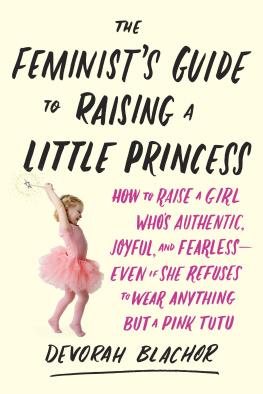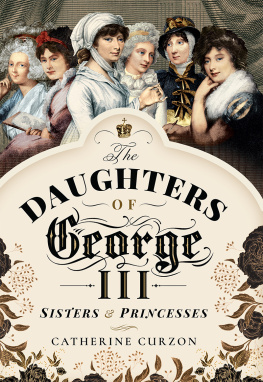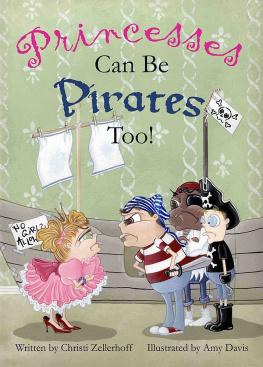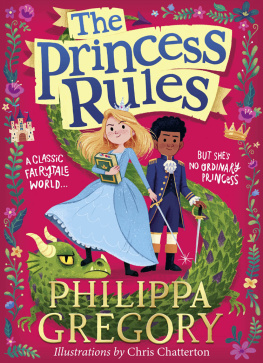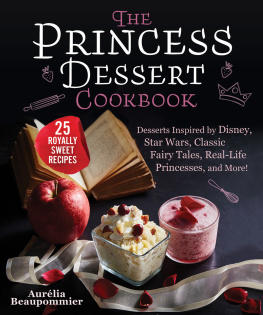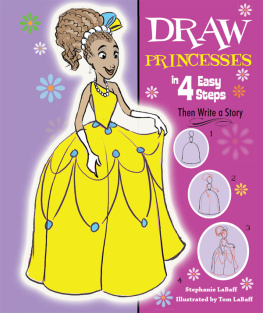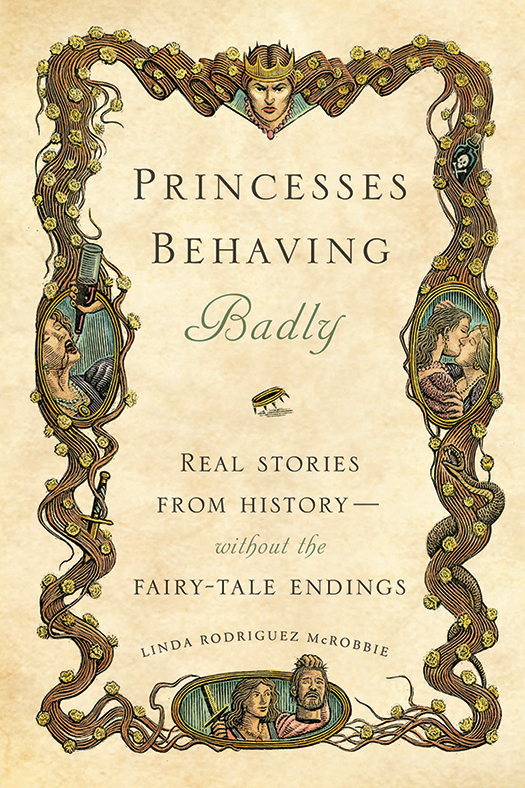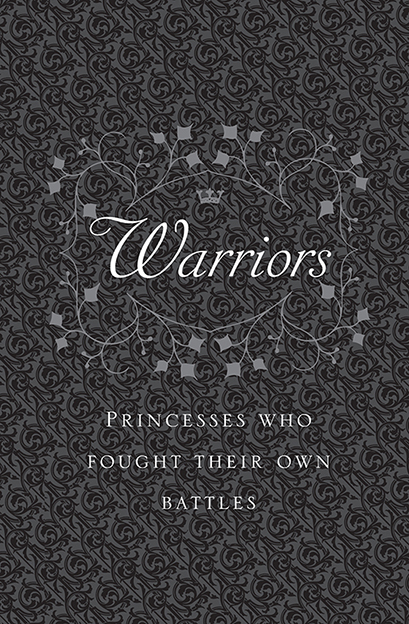Copyright 2013 by Linda Rodriguez McRobbie
All rights reserved. No part of this book may be reproduced in any form without written permission from the publisher.
Library of Congress Cataloging in Publication Number: 2012953988
eISBN: 978-1-59474-665-9
Designed by Doogie Horner
Illustrations by Douglas Smith
Production management by John J. McGurk
Quirk Books
215 Church Street
Philadelphia, PA 19106
quirkbooks.com
v3.1
C ONTENTS
WARRIORS
P RINCESSES WHO FOUGHT THEIR OWN BATTLES
USURPERS
P RINCESSES WHO GRABBED POWER IN A MAN S WORLD
SCHEMERS
P RINCESSES WHO PLOTTED AND PLANNED
SURVIVORS
P RINCESSES WHO MADE CONTROVERSIAL AND QUESTIONABLE CHOICES
PARTIERS
P RINCESSES WHO LOVED TO LIVE IT UP
FLOOZIES
P RINCESSES NOTORIOUS FOR THEIR SEXY EXPLOITS
MADWOMEN
P RINCESSES WHO WERE LIKELY MAD , OR CLOSE TO IT
Once Upon a Time
A N I NTRODUCTION
E VERY GIRL PRETENDS SHE IS A PRINCESS AT ONE POINT .
Lindy, from Alex Finns Beastly
Every little girl? Not quite.
When I was growing up, I didnt want to be a princess. I wasnt a tomboy or anything; I just wasnt into them. Horses, yes, especially the unicorn or winged or, best of all, winged unicorn kind. But then again, when I was a little girl, the Disney princess wasnt the glittery pastel-colored juggernaut it is today. You could be a little girl and not limit your dress-up choices to Belle, Ariel, or Cinderella (or Mulan or Merida, if youre feeling feisty).
Nowadays, princess obsession is the default setting for many little girls. In 2000 Disney decided to market the doe-eyed denizens of its feature films by their primary identifying characteristic: their princess titles. And thus was born the princess plague. Princesses are now the biggest industry for the pre-tween set. In 2012 the Disney Princess media franchise was the best-selling of its kind in North America, outselling Star Wars and Sesame Street and earning more than $4.6 billion worldwide. Add to that all the collateral stuffThe Princess and the Popstar Barbies, the Melissa & Doug Decorate Your Own Princess Mirror sets, countless pink-spangled princess T-shirtsand youve got what social commentators and worried parents are calling the Princess Industrial Complex.
In her fascinating book Cinderella Ate My Daughter (Harper, 2011), Peggy Orenstein examines the obsession with bundling girls into pink and pretty princess costumes. Orenstein, among many others, worries that princess play presents unrealistic expectations of feminine beauty, is overly restrictive (pink ball gown, or purple?), and is turning little girls into budding narcissists. So do I. Though no direct evidence supports claims that the ubiquitous princess culture harms girls self-esteem, it seems to me that the phenomenon smacks of an unjustified sense of entitlement, a kind of fake power derived not from good decision-making skills or leadership or intelligence but physical attractiveness, wealth, and relationships with strong male characters. Princess is a title that establishes bizarre expectations of how one should be treated, of what has value, and of what women will or should achieve in their lives.
Obviously, most little girls dont grow up believing that life is all dress-up heels, fairy godmothers, and Prince Charmings. But the princess fantasy is one that we dont ever really give up. Witness the fascination with Kate Middleton, the pretty girl-next-door commoner who married Britains dashing Prince William in April 2011. Though shes technically not a princessher official title is Duchess of CambridgeCatherines story has all the hallmarks of a fairy tale. The royal wedding even looked like a cartoonI almost expected to see twittering bluebirds carrying Kates train.
Sweetly two-dimensional Princess Kate was the image that tabloids the world over traded on, despite the grim reality of what happened to the last British princess given the fairy-tale treatment. Blonde blue-eyed Diana was Cinderella, a similarity not lost on media then or now. Dianas real story, howeverher marriage of convenience, her husbands infidelity, rumors of her own unfaithfulness, struggles with fame and eating disorders, her courtship of the British press, and her eventual death after being chased by paparazziis distinctly not the happy fairy tale everyone hoped for.
Perhaps the best way to make sure that the fairy tale doesnt become the expectation is to talk about real princesses and to stop turning their lives into fairy tales. Some real princesses were women who found themselves in circumstances they couldnt control. Sophia Dorothea of Celle, for example, was forced to marry a man she called pig snout, a man who violently assaulted her, cheated on her, and, after she retaliated by having her own affair, locked her in a castle for more than three decades until her death. Others, like Anna of Saxony, were genuinely mentally unstablea limited gene pool can be just as corrupting as absolute power. Pretty Grimm.
But some princesses found ways to shape their own destinies. Empress Wu of China showed that princesses can be just as Machiavellian as any prince. Some, like Sarah Winnemucca, used their titles (both real and imagined) to draw attention to a higher cause. Others were just out for a good time, like the American Clara Ward, a so-called Dollar Princess who left her Prince Not-So-Charming to run off with a gypsy violinist. And more than a few werent even princesses at all, like Caraboo or Franziska, the Polish factory worker who claimed to be the lost Romanov princess Anastasia.
Historical princesses have been capable of great things as well as horrible things; theyve made stupid decisions and bad mistakes, loved the wrong people or too many people or not enough people. They are women who lied, murdered, used sex as a weapon, or dressed like a man to hold on to power. They werent afraid to get a little dirt, or blood, on their hands. These women were human, but the word princess, along with its myriad connotations, often glosses over that humanity.
For each of the women described in the following pages, Ive tried to strip away the myth and portray something as close as possible to the real person. But history is only as accurate as those who record it, and that goes double when the subject is a woman. Ive made every effort to track down stories from the most reliable sources, but, as with any reconstructing of the past, some of the tales must be chalked up to rumor, gossip, and assumption.
Nevertheless, here are the stories of real princesses and real women. They may begin once upon a time, but they dont always end happily ever after.
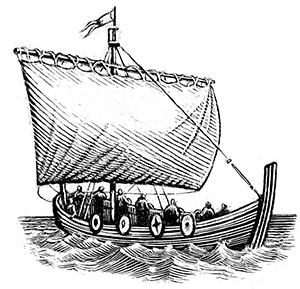 Alfhild
AlfhildT HE P RINCESS W HO T URNED P IRATE
C A . 5 TH CENTURY


